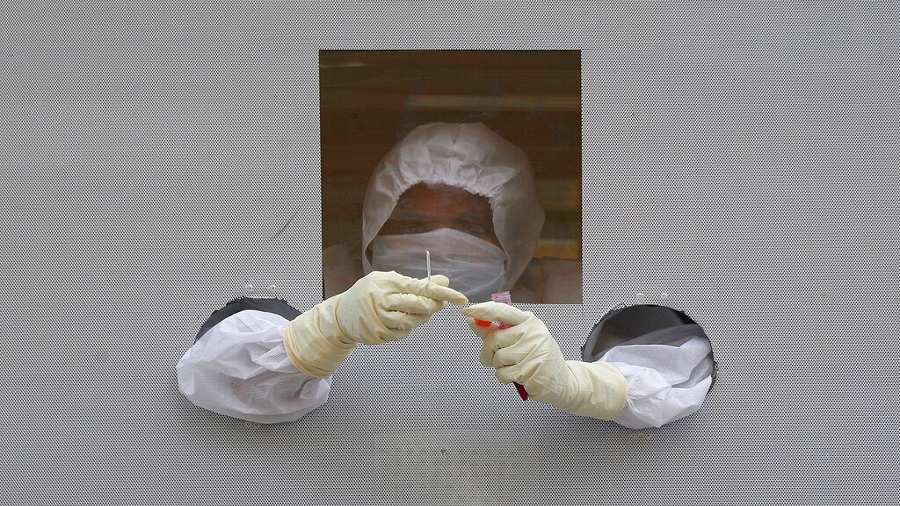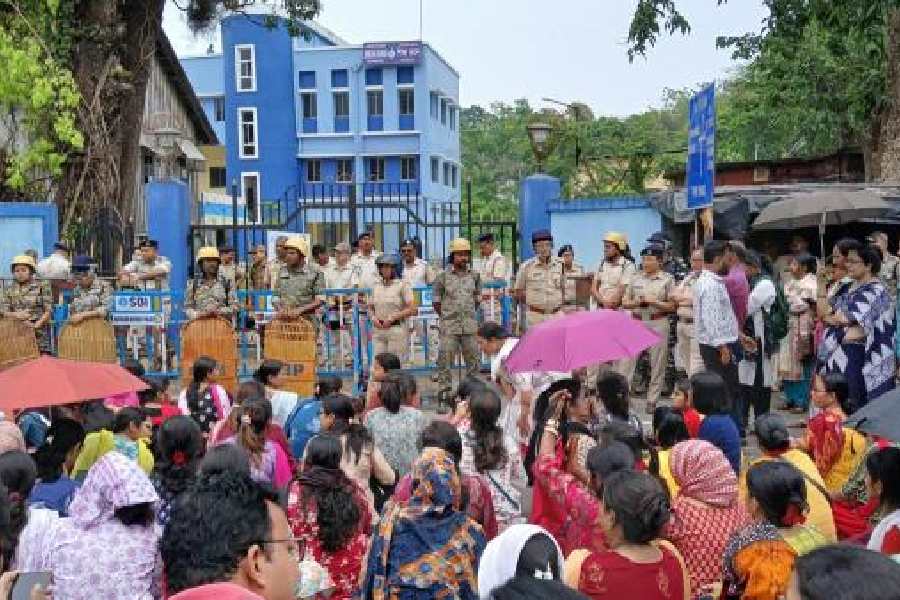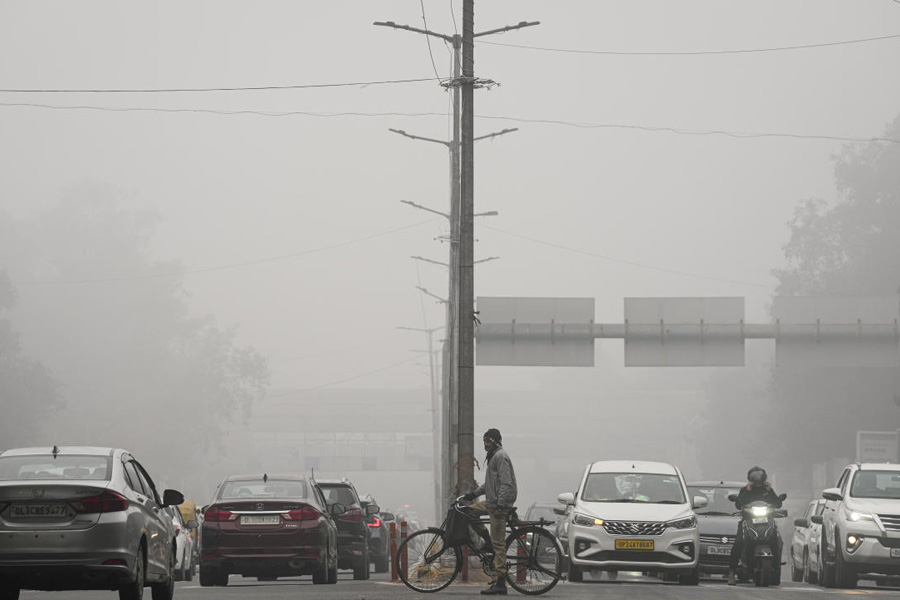First, let's get the really bad news out of the way: India has 1.6 million Covid-19 cases and the tally's rising by 55,000 a day currently, the fastest rate globally.
But believe it or not, there's good news amidst the fast-moving pandemic car crash: doctors say your chances of survival if you go to hospital with Covid-19 are much greater than even a month ago. "It’s been a huge learning experience. Fatalities have actually decreased,” says Sandeep Dewan, Director, Critical Care, Fortis Memorial Institute, Gurgaon.
When the pandemic first reached these shores, doctors admit they were shooting in the dark. Almost everyone, except older patients with cardiac issues, were dosed with hydroxychloroquine, a drug that Indian doctors were extremely familiar with but whose effectiveness against Covid-19 was unknown. Anyone who developed breathing difficulty was often quickly put on a ventilator. It took some time before doctors realised that as many as 85 per cent of patients put on ventilators didn't make it.
Now, doctors around the world have virtually abandoned ventilators, using them as a last resort, and HCQ. They've developed more conservative step-by-step treatment protocols using a handful of drugs like steroids, antivirals, immunomodulators such as Tocilizumab and anticoagulants like Heparin to aid patients in danger of blood clots. Patients who are short of breath are first put on nasal cannulas. If that doesn’t work, they are put on non-intrusive high-flow nasal oxygen machines which doctors have found to be effective. Finally, only if all else fails in treating a patient who is critically ill, they use an invasive ventilator.
There's also one trick that's so devilishly simple some doctors are wondering why they didn’t think of it earlier: patients with breathing difficulties are placed in a prone position on their stomach which makes it easier to draw air into their lungs.
The key realisation about the nature of the disease took some time coming. Initially, doctors around the globe made the cardinal error of assuming that the coronavirus only attacked the lungs - hence patients were put on ventilators. Patients who died were found to have extensive lung damage and this reinforced this diagnosis. Then, they realised it could affect various parts of the body.
Very quickly doctors found that the arteries leading to the lungs were also facing the danger of clotting and that they were delivering poorly oxygenated blood to the lungs. That's when they turned to anticoagulants or blood-thinners to prevent clots. “If the problem is also in the arteries, that cannot be solved by the ventilator. Initially, a lot of patients died despite the ventilator,” says Dewan,
Many causes of death
There can be different causes of death with Covid-19. First, there's oxygen deprivation. Then, there's the fact that the body's immune system overreacts and causes what's called a cytokine storm.
The next part of the treatment puzzle came when British doctors made a breakthrough and established that a type of inexpensive steroid widely used to subdue inflammation, if given at the right time, protects lung tissues and airways. Inflammation can become severe and prove fatal in later stages of Covid-19. Says Dr Romel Tickoo, Associate Director, Internal Medicine, Max Healthcare: "Initially, we thought steroids were increasing the viral load.”
Now, steroids are almost always given in moderate to severe cases. "When you need oxygen, then steroids do well," says Tickoo. Now, the most frequently used drug is dexamethasone, a generic that’s been around 60 years and used on severely ill patients. It reduces the chance of patients on ventilators dying by 36 per cent and deaths of patients on supplemental oxygen by 18 per cent. It’s the only drug so far to be found by researchers to improve survival chances and it’s inexpensive -- in India, it’s priced at Rs 0.25 for a 0.5mg tablet. Even in the UK, a course of dexamethasone costs around 5 pounds. However, researchers have seen no benefits so far from the medication for those patients who don’t need help to breathe. In fact, the researchers found it may even be harmful at earlier stages of the illness. Other steroids being used are prednisolone and methylprednisolone, but now doctors are switching many of their severely ill patients to dexamethasone
There are also strong and obvious advantages to using Heparin and steroids like dexamethasone. They're existing drugs and, as such, their side-effects are well known and their cost relatively inexpensive.
Protocols in place
After five months of dealing with the Covid 19 crisis, doctors have worked out protocols much more clearly than when they began treating patients. For a start, they categorise patients into mild, moderate and severe. They say mild patients don't really need hospitalisation. They used to prescribe the anti-malarial drug HCQ for such patients but that’s less frequent now amid widespread doubts about its effectiveness. (A string of research papers published globally have reported that HCQ does not help patients hospitalised with Covid-19 and sometimes causes adverse side effects). Then, they suggest strong doses of Vitamin C and also Vitamin D and zinc. Even a month earlier asymptomatic and mild patients were being given HCQ.
But patients staying at home need to keep a sharp eye on their oxygen saturation levels using an oximeter. If their oxygen saturation levels fall below 94 or so they should immediately head to hospital. This is particularly important because some Covid-19 patients can suffer from a condition called Happy Hypoxia in which they are lacking oxygen but do not feel breathless and hence do not realise it.
Moderately ill patients are usually given a combination of steroids and antivirals. If they show signs of getting worse, the steroid doses can be upped. It's reckoned that only 15 per cent of the cases that get Covid-19 need to be hospitalised. And of those, only 5 per cent are likely to need ICU care. These are the patients who need all the care the medical profession can give. Usually they're given a cocktail of steroids, antivirals and immunomodulators. Their body markers are carefully monitored for indications that blood clots may be form in which case anticoagulants are given.
New high-power oxygen machines
Many hospitals have also now got more efficient non-intrusive high-power oxygen machines. Earlier, oxygen machines could deliver around 5 litres of oxygen a minute. The newer high-power ones can deliver up to 30 litres to 35 litres per minute. Ventilation is avoided unless there is absolutely no alternative.
One newer treatment for patients is Remdesivir which was originally developed by Gilead Laboratories in the US for Ebola but was found to be ineffective. When Covid-19 erupted, the company worked against the clock to repurpose it for use in the pandemic. Being a new drug it’s expensive. It has been found to shorten hospitalisation by an average four days but does not boost survival rates. Says Dewan: “We use Remdesivir for moderate cases that need oxygen. I think it does work because if you treat moderate cases they do not become severe.” Another drug being used is Japanese anti-influenza drug Favipiravir. All the doctors agree, however, that whatever treatments are attempted, timing is crucial for the right results.
Plasma therapy
There is one more treatment of last resort administered to patients who are extremely unwell and have failed to respond to other treatments. That’s plasma therapy. Convalescent plasma is the plasma from people who have recovered from Covid-19 and have antibodies that can fight the illness. Delhi now has two plasma banks collecting blood from recovered patients and others have been set up in other parts of the country too.
And one thing every doctor is agreed on is that the national lockdown that started on March 24 slowed the pandemic and gave Indian doctors a chance to prepare and learn about the illness. Says Tickoo: “Lockdown gave us a window to understand the disease. We read a lot and had so many discussions. We saw what was happening in Europe and America. When it actually happened, we were able to treat the disease.”
Expert opinion
Indian doctors quickly linked up with their medical peers around the world. The result was they were getting briefed by Italian doctors in Lombardy, Italy’s worst-hit region, even as the pandemic was raging there. Now, there’s a constant information flow. “The biggest advantage of delaying the peak is that we’re always learning. We get three or four papers every day from around the world,” says Dr Shameer V. K., Assistant Professor, General Medicine and former Nodal Officer, Covid Cell at Kozhikode Medical College. He adds in a light-hearted vein: “It is always better to suffer last. We learn from their sufferings.”
However, there was a downside to the welter of information coming in. Says Dewan: “We were bombarded with literature in the first two-or-three months. It was difficult to filter it all and decide what to give.”
Tickoo points out that the two-month lockdown and the consequent late arrival of the pandemic on a big scale also gave India time to get new labs ready – there are almost 1,200 now around the country that handle Covid-19. Then, there was time to get the production of masks, PPE suits and even ventilators moving quickly. In urban India, most doctors say there’s no shortage of such equipment.
Crucially, the current practice now that very mild cases should be monitored at home has also meant the burden on hospitals has been kept to a more manageable level.
However, one worry
One worry now is that as the pandemic is slowing down in the bigger cities with relatively good medical facilities, it is moving to the smaller towns and rural areas where medical care is poor or non-existent. Dewan has been working with Fortis’ tele-ICU unit which works with smaller hospitals in four states. In Madhya Pradesh, it has links with hospitals in 10 districts. The 24x7 team of doctors can see data on patients in real time and a trolley going round the wards has a high-definition camera to enable them to observe patients as well as two-way audio to permit doctor-patient conversations.
On a personal front, many doctors and nurses say they are exhausted. Also, many have shifted away from their families in order to protect them from infection and are missing them. In Kerala, Dr Shimna Azeez at Manjeri Medical College, Malappuram says the strain is telling on everyone, particularly the medical staff and police who have been struggling to ensure that social distancing rules are followed earnestly. For the medical staff, working in PPE outfits with face-shields, goggles, masks, gloves and a hazmat-style jumpsuit is also a huge strain as they are suffocatingly hot and cumbersome to wear.
Doctors, concede, that they are still often shooting in the dark. Many of the drugs have been okayed for use but have not been subjected to large-scale clinical trials. Says Shameer about HCQ: “We don’t really know if it was the drugs which worked. But our patients got better.”
Impressive recovery rate
Encouragingly, India's case fatality rate is 2.21 per cent, as against 4 per cent globally, and is amongst the lowest in the world, according to the government. Also, it has an impressive recovery rate of more than 60 per cent, suggesting that those in India who’ve been diagnosed with the virus are recovering faster than they are dying from it. But critics say the true scale of infection, death and recovery rates in the population is unclear because of low testing.
Still it seems Mumbai, Delhi and other cities are making encouraging progress in their battle against Covid-19. But with the country set to enter Unlock 3.0, it’s no time for virus fatigue to set in. Indians must keep wearing masks and continue social distancing and further opening up of the economy could mean acceleration of the pandemic’s spread.
India already has the third-highest caseload after the US and Brazil and our seven-day rolling average of daily cases has been heading steadily upward, even though we’re testing far less than those two countries. India is testing at 12,000 per million, far below Brazil which is testing at 60,000 per million and the US which is testing at 163,000.
An MIT study has forecast that without a vaccine, India may be the worst-hit country globally by the coronavirus, recording 287,000 cases per day by next February, followed by the US at 95,000 per day.
Azeez says things are already getting more difficult because people, even in Kerala where they were very disciplined initially, have given up on social distancing and wearing masks. The medical profession, on the other hand, has been on almost continuous duty and will be under terrific strain if the pandemic continues for many more months. Says Azeez: “Even our parents and grandparents have never seen anything like this.”










